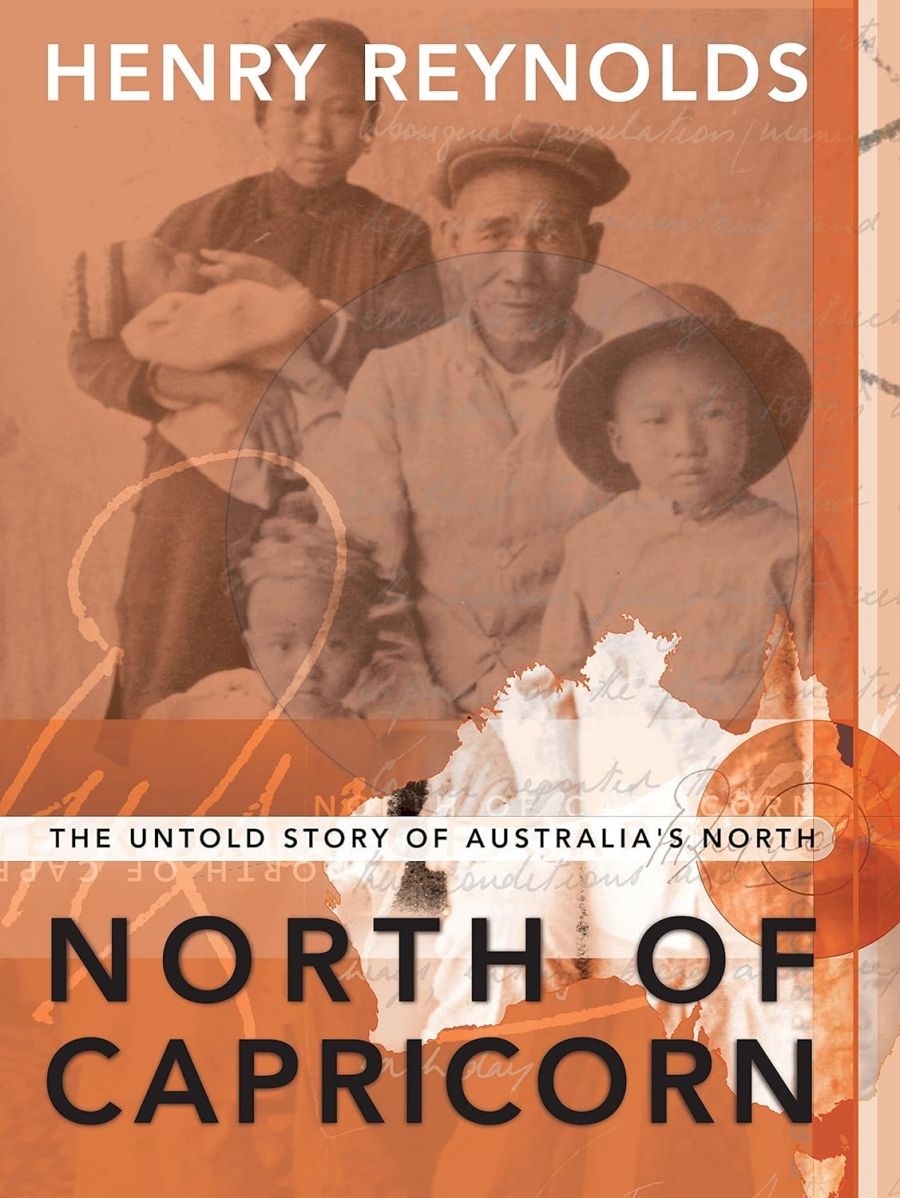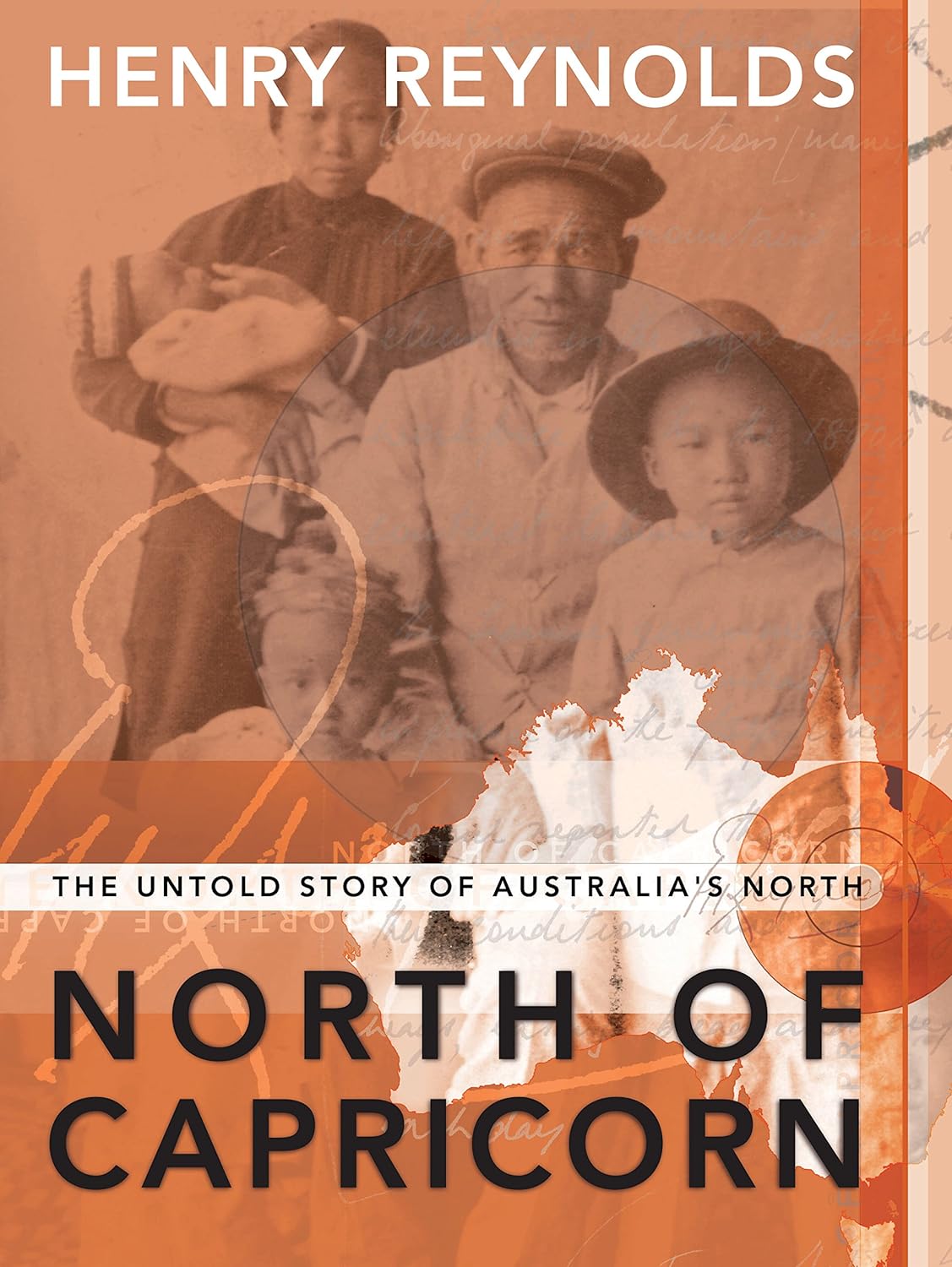
- Free Article: No
- Contents Category: Australian History
- Review Article: Yes
- Article Title: Necklace of Pearl
- Online Only: No
- Custom Highlight Text:
When Christine Anu sings My Island Home, that great Neil Murray song, there’s always an irony. She’s not singing about the big island that tugs at the heartstrings of most Australians when they hear the song, but a far smaller, more remote home in Torres Strait where things are done differently. The big island-continent may be benign in its fortified insularity, a haven against contaminants from across the seas, but it’s those smaller islands that have, in the song, the qualities of freedom, harmony and belonging that matter.
- Book 1 Title: North of Capricorn
- Book 1 Subtitle: The untold story of Australia’s north
- Book 1 Biblio: Allen & Unwin, $49.95 hb, 236 pp
- Book 1 Cover Small (400 x 600):

- Book 1 Cover (800 x 1200):

Thursday Island, the ‘capital’ of Torres Strait, turns up as the unlikely centrepiece of Henry Reynolds’s new book, North of Capricorn. For a while at the end of the nineteenth century, TI (as it’s known) lived out a set of alternative possibilities for the much bigger main-land – multiracial, integrated with the northern neighbours, taking advantage of local resources and diverse skills to benefit from its favoured position on routes of trade and communication. That was until the newly federated nation, united behind the idea of a White Australia, pushed that scenario away.
Back in 1901, Thursday Island (population 2000) was an ‘ethnological mosaic’, a democratic little community busy with maritime activity. Indigenous people in the area worked with the visiting luggers – by preference with the Japanese, who dominated the pearling industry. The Hospital Board was run by a Japanese entrepreneur, educated at the University of Michigan. A Filipino revolutionary had one of the most successful local businesses. Sri Lankans ferried people round the harbour. Chinese engaged in import–export. From Catholic to Salvation Army, the various churches were racially inclusive. As for the theatre, in the words of one reporter, ‘who can describe its diversity?’
Yet for a member of the new federal parliament, visiting in 1902, this strategic ‘Gibraltar’ was too important to ‘be practically in the hands of the Asiatic’. White Australia needed to assert control in those tropical climes. The politician proposed ‘to fortify it strongly and clear every alien out of it’. So TI came to epitomise an Australian dilemma: how to claim the north while excluding from full participation in citizenship the very people who could manage it best? That dilemma continues to infect our relationships in the region. From the vantage point of remote TI, one of the heroes of Reynolds’s book, Alexander Corran, editor of the Torres Strait Pilot, sees further than most of his contemporaries, raising a minority voice against the White Australia Policy with a prophetic analysis of its implications:
The question of white versus coloured in our country of Australia is one incapable of solution except in a natural and humane way … And it is in North Australian waters and on North Australian territory that the impact must occur sooner or later … But the Alien Restriction Bill … will remain a menace to the good feeling and friendly relationship hitherto existing … There is little and in some cases no recognition of any right as against the white … We have also the coloured native, who as in the case of New Guinea, now a part of White Australia, must be considered, and be treated with every due right. As time goes on it will be revealed that the Commonwealth has undertaken an impossible task, and in doing so has erected a barrier to progress and development in North Australia, crippling the whole country.
Reynolds takes aim at White Australia in his concluding chapters, but North of Capricorn is not a polemical book. It starts with Aboriginal Australian responses to interlopers in the north, including the Macassans, and the working relationships that developed in this last settled part of the country. It continues as a voyage around major coastal communities from Mackay to Broome, recording the significant presence of Melanesians, Chinese, Japanese and other peoples from across the northern waters, and their crucial pioneering achievements. Without Aboriginal people no cattle industry, without the Pacific Islanders no sugar, without the Chinese no bananas or fresh vegetables or fancy goods, without the Japanese no pearls. The story is a generally positive one of industry, cooperation and problem-solving beset by racism and misunderstanding, and suspicion from Down South. The south found the north luridly, disreputably fascinating. Reynolds corrects that stereotype by showing how orderly and civic-minded these culturally mixed communities were. He quotes visitors and residents alike, emphasising the agency and organisation by which non-whites claimed their place, and he illustrates his text profusely with telling archival photographs. We’re told that the well-to-do in Broome sent their laundry on the seven-day boat trip to Singapore rather than to Perth, and we’re shown a group of pearling masters before and after – in formal dress and in their sarongs.
Less black armband than necklace of pearl, North of Capricorn is celebratory history, recovering a forgotten heritage that has a significant message for the present. The book is Reynolds’s tribute to John Iremonger, his inspirational publisher who died last year, and to Brian Dalton, pioneer of the distinctive history school at James Cook University, Townsville, where much of the research emanated. Reynolds’s contribution here to the growing field of northern Australian history draws together the work of many colleagues. A bibliography would have been welcome, to indicate the scope of the material available, including the more localised studies that are extending our sense of how people got on, such as Andrew McMillan’s An Intruder’s Guide to East Arnhem Land (2001) and Richard Baker’s Land Is Life: From Bush to Town: The Story of the Yanyuwa People (1999), to name two recent on-the-ground accounts in an area I am familiar with.
The sense that this history was neglected because its protagonists did not count is hard to ignore. Non-whites were deported, or relocated internally in the case of Aboriginal people, since it suited the imperatives of what Reynolds calls the ‘dangerous fantasy’ of White Australia. He quotes a harrowing letter from a Pacific Islander, separated from his wife and child when he was expelled from Queensland in 1906: ‘Suppose I no see you any more along this ground we will meet in heaven.’ The very success of such people in ‘the confronting north’ was held against them because it exposed the failure of supposedly superior whites in their colonising enterprise. ‘An empty north was far preferable to the multi-racial one that had developed during the last quarter of the nineteenth century,’ Reynolds concludes. And so it became. South Australia dumped the Northern Territory on to the even more distant Canberra at the time of Federation, regretting the millions wasted in defying the Colonial Office’s view that it was ‘perfectly preposterous’ for the northern parts of Australia to ‘be governed from Adelaide’. Only this year has the Adelaide–Darwin rail link at last been completed.
Reynolds concludes with a comment on border protection, but in general the legacies and lessons of the historical north for today’s Australia are not pursued in this book. Yet there are a host of human connections. Kylie Kwong, the celebrated ‘new Australian’ chef, for example, is the great-granddaughter of Kwong Sue Duk, a Chinese herbalist who began his enterprises in Darwin in the 1890s. Beyond such particular stories is a larger story. In debates about where Australia is heading, history is often set against geography, with ‘history’ as code for the Anglophone British/American allegiance and ‘geography’ as code for Asia. North of Capricorn shows that it is senseless to set the two apart. Our history, looking back to the north in the second half of the nineteenth century, is about geography. In this case, maybe the tail can wag the dog.


Comments powered by CComment